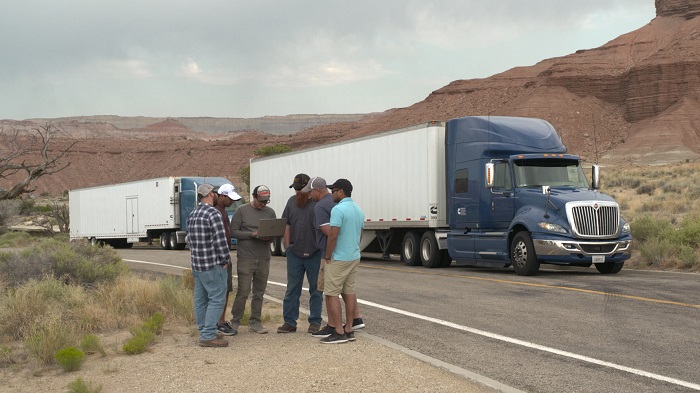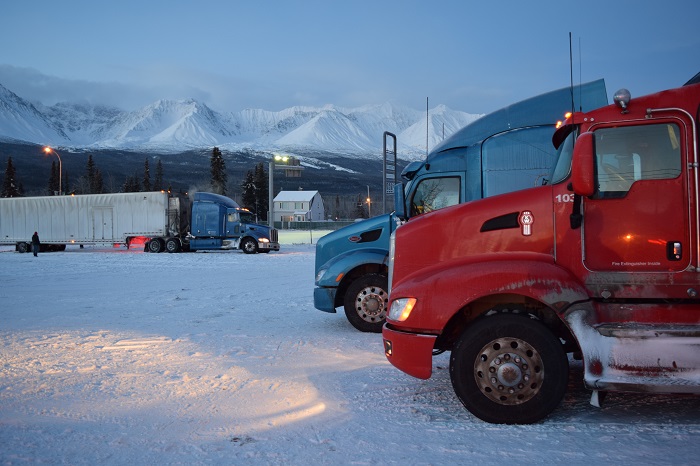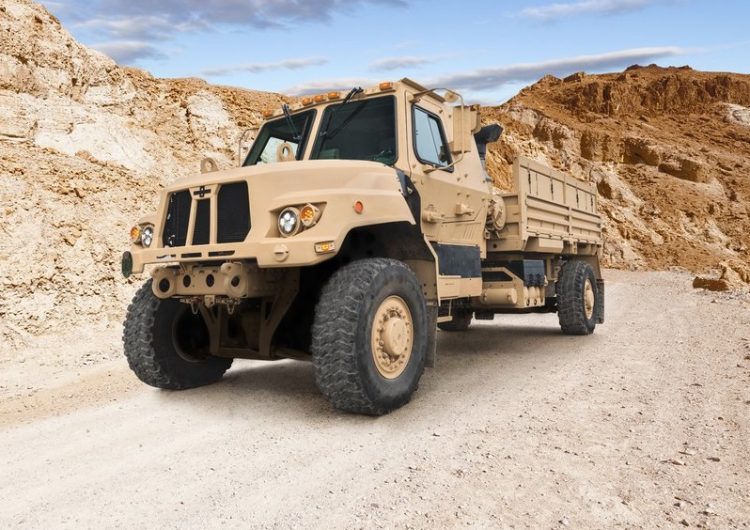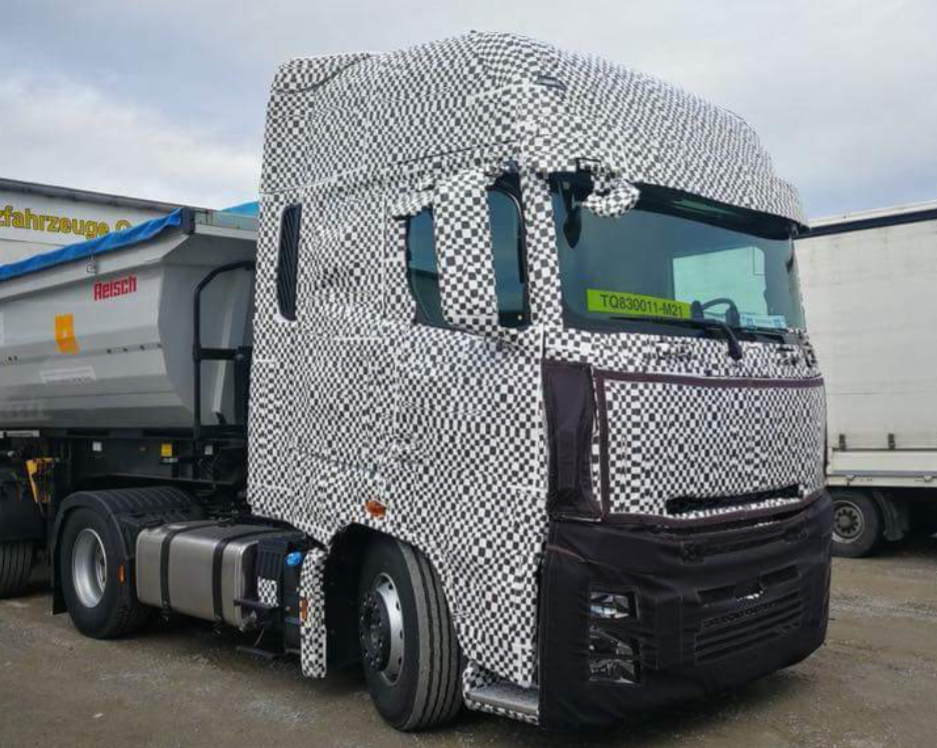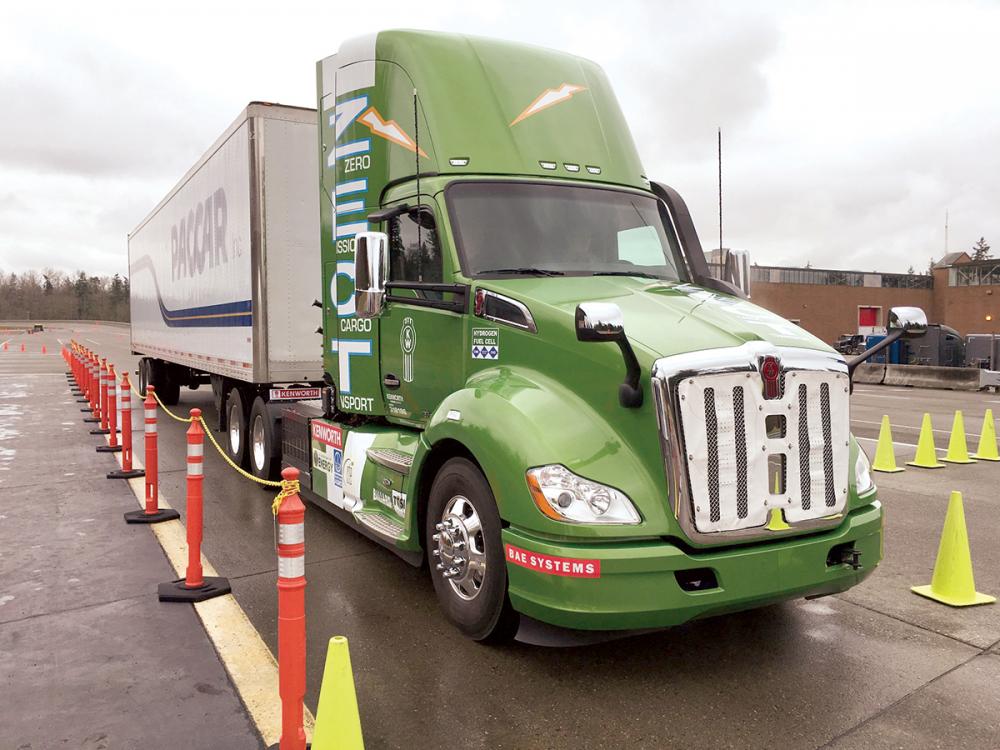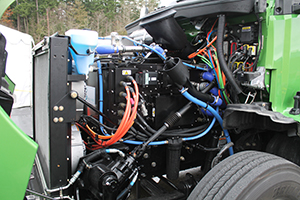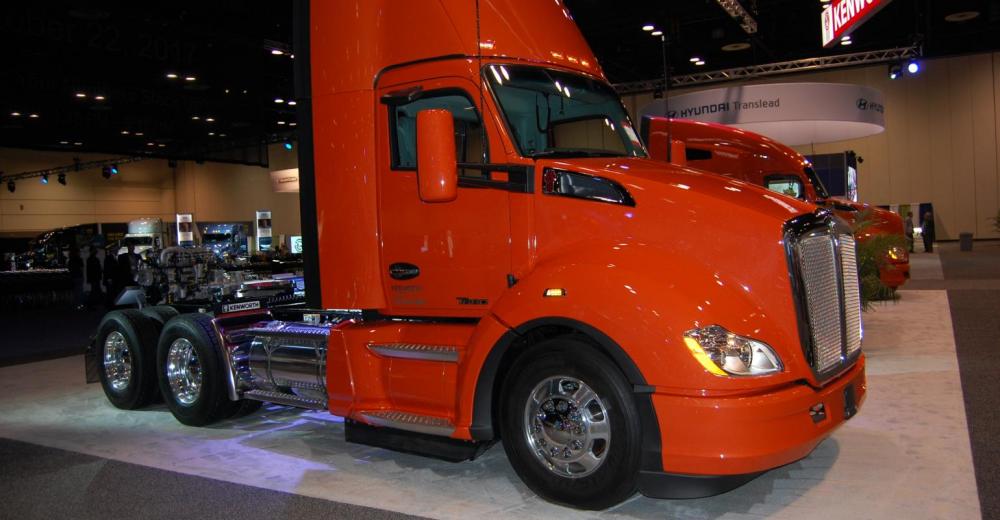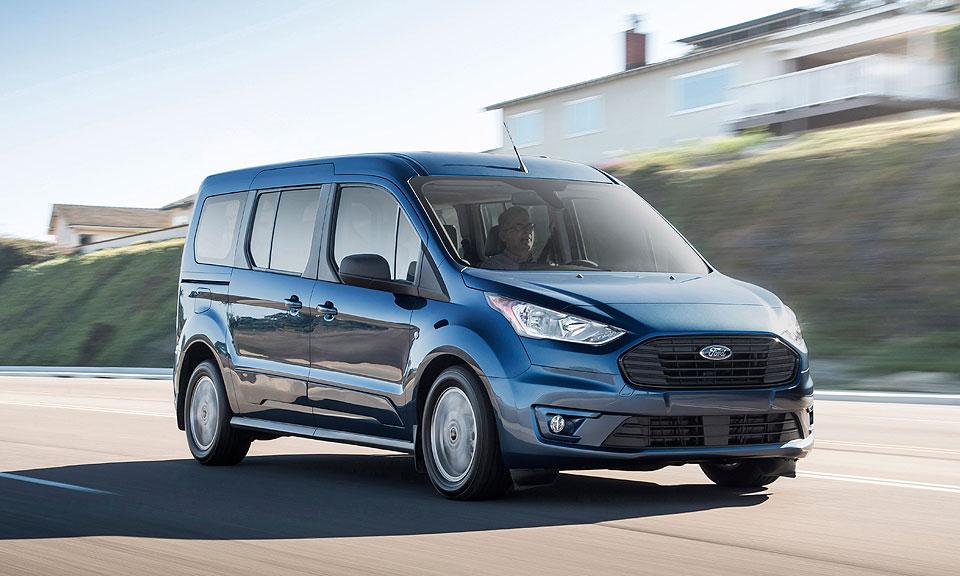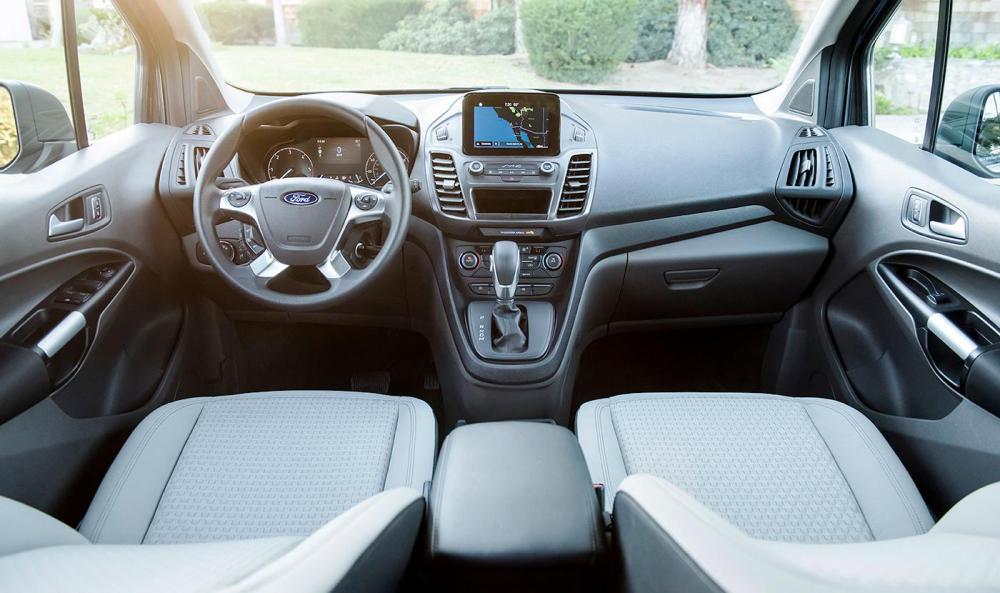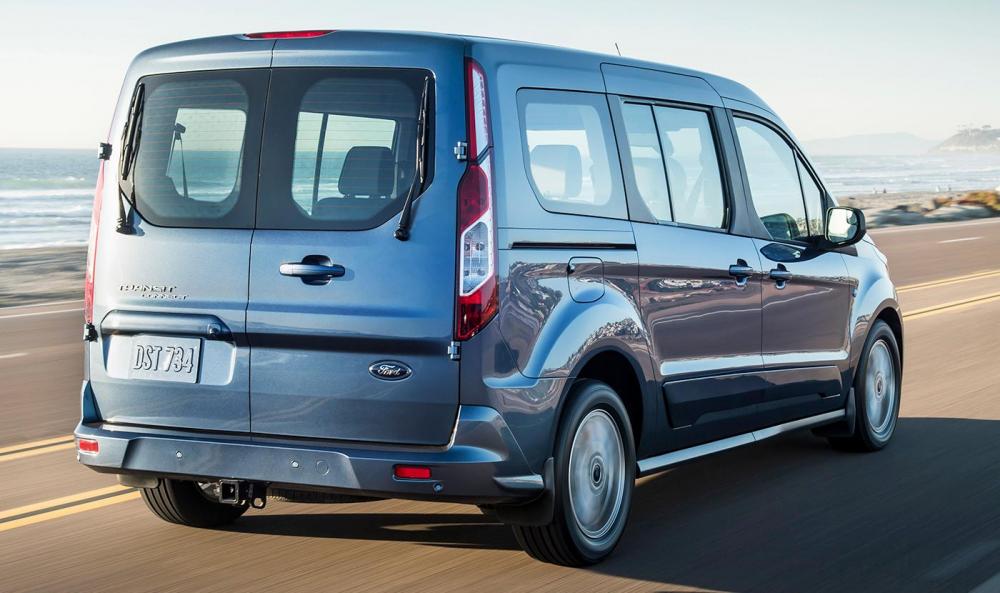
kscarbel2
Moderator-
Posts
18,886 -
Joined
-
Days Won
114
Content Type
Profiles
Forums
Gallery
Events
Blogs
BMT Wiki
Collections
Store
Everything posted by kscarbel2
-
A8-R897RSX https://www.bigmacktrucks.com/topic/8229-big-aussie-mack/ https://www.bigmacktrucks.com/topic/33150-when-mack-ruled-the-roads-of-iran-part-2/?tab=comments#comment-211876 http://forums.dhsdiecast.com/default.aspx?g=posts&t=134678
-
Ram plan brings Detroit ripples Larry Vellequette, Automotive News / February 12, 2018 FCA US' plan to spend $1 billion to move production of its heavy-duty Ram pickup out of Mexico has big economic implications for Detroit. But it's unclear how far the project's ripples will spread — or when. Suppliers are typically the biggest generators of jobs in a major plant project, but FCA already has a large number of truck suppliers in the Detroit area, says Mike Robinet, managing director of IHS Markit's automotive global advisory practice. Last month, the automaker revealed that in 2020 it will move heavy-duty Ram production from Saltillo, Mexico to its Warren, Mich., assembly plant north of Detroit. In discussing the plan with reporters, FCA CEO Sergio Marchionne called moving the pickup to Mexico in 2008 "an error." The Warren plant already is scheduled for a major capital project, handing off production of the light-duty Ram to a nearby Detroit-area assembly plant with increased capacity, while Warren will be repurposed to build high-end, body-on-frame Jeep SUVs. Adding the heavy-duty Ram will require the automaker to hire 2,500 workers on top of the work force needed for the Jeep plan, FCA said last month. But unclear is how much additional spending or how many more Detroit-area jobs will be created by suppliers to the pickup. Many heavy-duty Ram suppliers are also likely to provide parts for the light-duty Ram 1500, which has been moved 10 miles north to FCA's Sterling Heights, Mich., assembly plant. Robinet believes bringing the heavy-duty Ram to Michigan will shore up some suppliers that might have had production decline in recent years. But other suppliers will need to make new investments and add workers, he said. The Ram supply chain has received few specifics. An FCA representative told suppliers in a three-minute conference call on Jan. 26 that they should continue planning to support the launch of the next-generation heavy-duty Ram in Saltillo in January 2019, with their current parts plants, according to one supplier on the call. The FCA representative said that early builds of the next-generation heavy-duty pickups would be produced in Mexico through April of this year, with preproduction models starting in October, also in Mexico. That schedule means that suppliers will have to be prepared to meet 2019 production requirements for the truck in Saltillo while preparing to launch parts for the truck 1,800 miles north in Michigan in 2020. "It's going to be a cost, no question about it," said Julie Fream, CEO of the Original Equipment Suppliers Association, which represents auto suppliers. "Who bears that cost will have to be negotiated between FCA and its suppliers." Marchionne said the Saltillo plant would be repurposed to build one-ton commercial pickups for export to FCA's Europe/Middle East/Africa, Latin America and Asia Pacific regions.
-
Ford rushes to build more SUVs Michael Martinez, Automotive News / February 12, 2018 LOUISVILLE, Ky. — Ford and Lincoln dealers can't get enough of their biggest, most expensive SUVs to keep up with customer demand, which is a pretty good problem to have. But it's a problem nonetheless, one that Ford Motor Co. is addressing with a $25 million investment to speed up the assembly line here. The automaker planned to announce the upgrade to its Kentucky Truck Plant on Monday, Feb. 12. The investment, on top of $900 million already spent on the plant to launch the 2018 Ford Expedition and Lincoln Navigator, will allow Ford to build 25 percent more of the SUVs this year than originally planned. "It's important for this plant to produce more vehicles," Joe Hinrichs, Ford's president of global markets, told reporters here. "In this segment, people will pay for a great product. The dealer feedback has been even stronger than we've hoped for." Retail sales of the vehicles skyrocketed in January, up 59 percent for the Expedition and 132 percent for the Navigator. (Ford attributed a 15 percent decline in total Expedition sales to the timing of fleet orders.) The highly profitable SUVs are turning on dealer lots almost as fast as they can be unloaded from delivery trucks. It had been a decade since the Navigator was fully redesigned, and 20 years since the Expedition got a thorough overhaul. "Both of the vehicles are doing really well for us," Ford sales analyst Erich Merkle said. "Because they're turning so fast, we're going to do everything we can to meet the demand that's out there." CEO Jim Hackett has banned Ford employees from ordering Navigators or Expeditions for personal use, a source with direct knowledge of the directive told Automotive News. Typically, employees who get vehicles through the company's manager lease program can have their pick of the lineup, excluding some high-performance models. Restrictions on mainstream vehicles are rare, if not unprecedented, the source said. The Expedition — starting at $52,890, including shipping — is averaging just 11 days on dealer lots. The average transaction price rose $7,800 in January thanks to a 29 percent mix of the most expensive Platinum trim, which starts at $76,595. That's double the mix of Platinum models sold of the outgoing SUV, Merkle said. Navigator sales are up triple digits in every region of the country, including a 135 percent gain in Ford's western sales region, which includes California, Merkle said. Average transaction prices surged in January, up $21,300 over the same month last year. That's because 84 percent of sales were of the high-end Reserve ($82,400 sticker) and Black Label ($96,650 sticker) trims. "We could have sold a lot more in January if we had them," Mark LaNeve, Ford's vice president for U.S. marketing, sales and service, said on a Feb. 1 conference call. Kevin Collins, president of Bill Collins Ford-Lincoln in Louisville, said Expeditions and Navigators are sitting at his store for only five or six days before they're sold. "Stock is low right now and they're selling very, very well," he said. "We hope the days supply will continue at that rate because they're expensive; a dealer can't afford to have them sitting around too long." Collins said customers have been impressed with both the exterior style changes and the interior technology. "They're fine, fine products that we're really proud of," he said.
-
Jaguar revives D-Type roadster as a 'once-in-a-lifetime' project
kscarbel2 replied to kscarbel2's topic in Odds and Ends
Lucas.......the people who invented darkness. -
Hyundai Group, LG, Samsung.......very serious and competent global players.
-
Communist Party-backed Geely wants major Daimler stake
kscarbel2 replied to kscarbel2's topic in Trucking News
Don't take this at face value. Geely is merely a means with which to gain more advanced technology. The actual interested parties are China's NDRC and SASAC. NDRC - National Development & Reform Commission SASAC - State-owned Assets Supervision & Administration Commission of the State Council -
Blair Claflin, Cummins Inc. / December 20, 2017 Cummins engineer Trent Berardi was in trouble. Usually frigid Fargo, North Dakota (U.S.A.), was too warm. With his team ready for two-and-a-half weeks of testing Cummins’ X12 engine under extreme winter conditions, Berardi had to quickly find cold temperatures close enough to his base in Columbus, Indiana (U.S.A.), to stay on time and budget. Then he got the good news: Idaho Falls, Idaho (U.S.A.), was having a cold snap. “Thankfully, we found the temperatures we were looking for relatively nearby,” Berardi recalled. Such is the life of a validation engineer, the last line of defense before a Cummins product reaches the customer. These engineers oversee final testing to make sure a new engine platform or another Cummins product works when installed in a truck or other equipment. The testing frequently includes a two-to-three week road trip to see what happens when the engine is stressed by extreme temperatures or elevation. Engineers say some things can only be discovered on the road. “You’re looking for gaps between systems,” said Berardi, a Senior Validation Engineer in the Cummins Engine Business. “It’s like playing chess on a three-dimensional board.” LONG DAYS, SHORT NIGHTS, EXTREME TEMPERATURES Validation testing takes place not only at Cummins facilities in the U.S., but in China, India, the U.K. and elsewhere. U.S.-based teams have traveled as far as Fairbanks, Alaska, and Death Valley, California, to find the ideal combination of temperature and grade. In the U.S., trips can include 8 to 10 vehicles, counting support vehicles, and as many as two-dozen engineers, some flying in to observe just part of the testing. Winter trips mean temperatures as low as 40 degrees below zero Fahrenheit (- 40° Celsius). Summer trips can include daytime highs up to 120°F (49° Celsius). Elevation testing usually takes place at 10,000 to 12,000 feet (3,048 to 3,658 meters) above sea level. A 17-hour day is pretty common and the most important hotel amenity is truck parking. Hotel parking lots are frequently used for emergency repairs. Despite the challenging conditions, validation engineers say they love the trips. “I think it’s the chance to really see how our products work,” said Jeffrey Friend, a Controls Performance Engineer based in Columbus who estimates he’s been on about 30 validation trips over 17 years with Cummins. “You’re out there with engineers who are experts in their field and there’s no phone calls, no meetings, you just focus on the product.” The testing usually involves traversing steep grades, or going from zero to 60 miles-per-hour (97 kilometers-per-hour) as rapidly as possible – commonly referred to as “drag racing” by validation engineers. The fun really begins, they say, when they “break something” – a catchall term that could involve just about anything limiting performance. Then the team has to figure out how to make improvements. “That’s when you get a chance to find something you can improve on before our product gets in the hands of the customer,” said Beth Wendel, a Validation Group Leader in the Engine Business. “That can be very exhilarating.” TALES FROM THE ROAD After a 6-month college internship on an oil tanker crossing pirate-infested waters off the coast of West Africa, Chitresh Sharma rarely gets car sick even going up and down mountain roads looking at data on his laptop. But the Senior Engineer in Product Validation at Cummins vividly remembers his time in a truck making run after run to test a Cummins engine in the desert outside Las Vegas, Nevada (U.S.A.). He asked the technician driving the truck they shared to turn off the air conditioning and roll up the windows to reduce drag as much as possible. Sharma will soon be taking a new position in Cummins’ supply chain organization, but he says “I know I’ll miss this job, and I think I’ll end up missing these trips most of all.” Friend recalls how one team he was with solved the lack of suitable restaurants in Death Valley by storing deli trays in a refrigerated truck they were testing, and during a break in the desert backing it up to another truck, creating a cool area to eat. “Problem solving is really central to all aspects of these trips,” he said. Perhaps no one has more stories about validation testing than Greg Sitzman, a Mechanical Engineering Associate based at the Cummins Technical Center in Columbus. He estimates he’s been on 50 validation trips over 10 years with the company. Sitzman has been to Alaska five times, Death Valley, International Falls, Minnesota, and many other locations. He’s driven the Alcan Highway dividing Canada and Alaska, and put chains on a test truck to keep it from sliding through the Rocky Mountains. Once he even made a repair near Yellowknife in Canada’s Northwest Territories parked on a frozen lake. That enabled him to easily slide under the truck. But he says what he likes best about the trips is the camaraderie. “To me, while I enjoy the challenges, what makes these trips special are the people,” Sitzman said. “They make it fun. They are just good people to be with.” .
-
So that has a 3-cylinder 20-horsepower Yanmar diesel?
-
Jaguar revives D-Type roadster as a 'once-in-a-lifetime' project
kscarbel2 replied to kscarbel2's topic in Odds and Ends
BC Mack, brand new D-Types in year 2018.........who could have ever thought. -
Hannah Elliot, Bloomberg / February 7, 2018 Jaguar has revealed its third continuation car, the D-Type. The six-cylinder roadster joins the Jaguar Lightweight E-Type and the Jaguar XKSS continuation cars in the program the company developed in 2014 to re-issue modernized versions of its most iconic models, Jaguar said in a statement. This latest car, although made this year, will look exactly like the original D-type, which won the Le Mans 24 Hours race three times from 1955 to 1957. Tim Hannig, the director of Jaguar Land Rover Classic, characterized the car as a "once-in-a-lifetime" project. The D-Type is likely to cost more than 1 million pounds ($1.4 million), judging from previous continuations. An original D-Type once owned by Bernie Ecclestone, former head of Formula 1, was offered for sale for $12 million last month at a Gooding & Co. auction in Arizona. While that one didn't sell, Sotheby's sold a 1955 D-Type in 2016 for almost $22 million. Against those prices, this new one, for what will likely cost less than $2 million, looks like a bargain. The D-Type is special because of its rarity, racing wins, and body styling. Its shape was heavily influenced by the most advanced aeronautical technology of the time, with a monocoque cockpit fashioned from sheets of aluminum alloy. At the time, designers followed a practice that originated in the field of aviation: putting the fuel in the vehicle's tail. Every aspect of the new version will follow authentic, original specifications, including the sleek hood, wide-angle cylinder heads, quick-change brake calipers, and unmistakable tail fin. The interior will have the same round speedometer dial, thin wooden and metal-perforated steering wheel (right-hand drive, of course), and four-speed manual shifter. The steel on the exterior will also be the alloy. At the time of its original debut, the car had 250 hp and could hit a top speed of 167 mph. Clients can even choose to buy either a 1955-spec shortnose or a 1956-spec longnose version. Deliveries will start later this year. Twenty-five will be made, considerably more than the six Lightweight E-Types Jaguar built in 2014 and the nine XKSS's it built in 2017. A spokesman for Jaguar, owned by Tata Motors, said the increase reflects that only 75 were completed of an original production run that had been intended in 1955 to reach 100, though it's safe to say the company will make a good profit producing these modern historic vehicles. Tata's Jaguar Land Rover has done similar work on a far less-expensive and rarefied scale to much success with its Land Rover Classic and Range Rover Rebuild programs. The Range Rover Rebuild program, for instance, reissues small batches (fewer than a dozen) of 1970s-era Range Rovers to capitalize on the explosion of interest in them on the vintage market. Land Rover said last month it will release a limited-edition run of a high-performance version of its Defender model. Official production of the Defender ended in 2016. The new D-Type will make its first public appearance at the Salon Retromobile on Wednesday in Paris. .
-
Korea Inc., led by leading Audi and BMW veteran designers like Peter Schreyer, have Detroit and Japan Inc. scared to death.
-
No word on the engine. I think people are going to be disappointed with Ford at the work truck show.
-
Defense News / February 7, 2018 WASHINGTON — The Army has chosen Oshkosh Defense to build the next-generation variant of its Family of Medium Tactical Vehicles, a primary mover for weapons, sensors and communications platforms. The contract is worth $476.2 million, according to a Feb. 7 Pentagon announcement. Both incumbent Oshkosh — having produced the FMTV A1 variant since 2009 — and AM General submitted bids and the Army entered an evaluation period in May 2017 for its FMTV A2. Both companies touted their offerings at the Association of the U.S. Army’s annual convention in October. Oshkosh has manufactured and sustained more than 150,000 tactical wheeled vehicles for the U.S. Defense Department and its allies and has delivered more than 36,000 FMTV trucks and trailers, according to the company. “For decades, the Family of Medium Tactical Vehicles has formed the backbone of the Army’s local, line haul, and unit resupply missions in combat, combat support, and combat service support units,” according to a Feb. 7 Army statement. “These trucks, consisting of 15 variants sharing a common chassis and components, play an important role as the prime mover for several weapon, sensor, and communication platforms.” “During recent conflicts, we added more protection to our medium trucks, which added weight, along with high-tech systems that require more power,” Alvin Bing, the Army’s product director for medium tactical vehicles, said in the statement. “That gave the crew the protection they needed and kept them connected to modern battlefield technology, but it also took away from how the vehicles were originally intended to perform. So we launched the A2 effort to restore the performance we had traded, while preparing the fleet to grow with tomorrow’s Army.” The Army used soldier feedback and time with industry to learn what was important and to “maximize value,” Col. Dan Furber, the Army’s project manager for transportation systems, said in the statement. Through industry days and demonstrator vehicle evaluations, the Army “made sure everyone had plenty of time to understand today’s truck and what we wanted to change,” Furber said. “As a result, we’re going to give soldiers a great truck with a stronger chassis, better protection, more power, and new safety features that provide them much better ride quality, while making them safer and more effective.” The Army owns the technical data package for FMTV. As part of the competition, the Army asked vendors to propose a series engineering change proposals to the FMTV design and for plans on how the vehicles would be produced. “Oshkosh’s FMTV A2 design features parts commonality that results in streamlined maintenance, training, sustainment and overall cost efficiency for our customer,” Pat Williams, vice president and general manager of Army and Marine Corps Programs at Oshkosh, said in a company statement. “Oshkosh is ideally positioned, given its engineering, manufacturing and FMTV experience, to execute the next generation FMTV A2 program, running along the same warm production line that has been building FMTV’s for the last eight years.” If all options are exercised during a five-year ordering period plus two additional one year options, Oshkosh could end up producing up to 2,400 vehicles under the contract, according to a Federal Business Opportunities notice. The estimated date of completion is February 2022, according to the DoD contract notice. This isn’t the first time Oshkosh and AM General have gone relatively head-to-head in a recent vehicle competition. Oshkosh beat out both AM General and Lockheed Martin in August 2015 to build the Army’s Humvee replacement, the Joint Light Tactical Vehicle (JLTV). The JLTV deal could ultimately be worth $6.7 billion in low-rate initial production but could generate up to $30 billion for Oshkosh over the entire program. After the loss, AM General focused its efforts worldwide, recently announcing last year it would develop trucks a la carte for customers around the globe. According to the Army, the new FMTVs will begin rolling off the production line in 2020. .
-
The Haulmax 3900’s narrow width, low centre of gravity and dual rear axle configuration offers a solution for extended distance hauls and soft & slippery underfoot conditions as a prime mover for service and support mine site equipment. Elphinstone have delivered almost 100 Haulmax trucks via the global Caterpillar Dealer Network to customers in Australia, New Zealand, Canada, Africa and the United States where they are providing solutions as extended distance haul trucks, service trucks, low bed tow tractors, water trucks, and wet weather / downhill haulers. . . .
-
Dramis International / November 27, 2017 Dramis International, Simard Suspensions off road department, presents its new mining truck : the D150T. Imagined, designed, manufactured and assembled in our factory, the Dramis D150T meets point by point the specifications imposed by the driving conditions of the truck: load and type of ore, distances, rolling conditions (terrains, slopes, temperatures). Each element has been designed or selected to provide the best performance, maximizing reliability and security. Contact our experts for all your off road heavy loads transportation projects. Simard Suspensions, 80 years of expertise in the increase and load distribution of your heavy trucks. www.dramisintl.com .
-
-
Kenworth Plans for Hydrogen-Electric Class 8
kscarbel2 replied to kscarbel2's topic in Trucking News
Hydrogen Fuel Cell System - Ballard Power Systems (* Ballard made a lot of noise about fuel cells in the second half of the 1990s but nothing came of it.) Electric Propulsion System - BAE Systems (there's a military dual-use application at work here with discreet government funding) Engine: Ballard Power HC85 Traction Motor: Dual-rotor AC motors, 420 kW or 565 hp Transmission: Automated Eaton 4-speed Brakes: Bendix Air Disc ADB22X Fuel capacity: 30 kg of hydrogen Battery capacity: 100 kW-h Batteries: XALT Xpand 650 VDC * http://wardsauto.com/news-analysis/ballard-battling-break-through-daimler-and-ford-behind-it-vancouver-firm-sets-fuel-cell-agenda -
Kenworth Plans for Hydrogen-Electric Class 8
kscarbel2 replied to kscarbel2's topic in Trucking News
Kenworth Preps Hydrogen-Electric T680 for Drayage at SoCal Ports Transport Topics / February 8, 2018 MOUNT VERNON, Wash. — Kenworth Truck Co. is wrapping up tests on a zero-emissions hydrogen-electric Class 8 truck that will be operating in drayage applications in Southern California by the end of March, company executives said. California has set a goal of having 100,000 zero-emissions freight vehicles in operation by 2035, and the Port of Los Angeles and the Port Long Beach, where Kenworth’s Zero Emissions Cargo Transport truck will operate, have included zero-emissions trucks into their latest clean air action plan. “We are developing a path to production” for the truck, whose only emission is water vapor, Stephan Olsen, director of product planning for Kenworth, told Transport Topics Feb. 6 at Paccar’s Technical Center here. The ZECT truck, which produces little engine noise when compared to a diesel, carries 30 kilograms of hydrogen behind the cab in six tanks, each pressurized to 5,000 PSI. Refueling with hydrogen can be done in 15 minutes. Instead of an internal combustion engine, a fuel cell sits under the hood and produces electricity by combining compressed hydrogen and air to generate the current. A battery stack, weighing about 2,200 pounds, is located below the seats and stores the electricity. Related cables, lines and systems add another 1,500 pounds. A dual-rotor electric motor propels the truck with an output the equivalent of 565 horsepower. The truck is capable of carrying 80,000 pounds and uses an automated manual transmission. In all, it weighs in at 22,000 pounds, or 6,000 pounds more than the diesel-powered version of the model T680 truck. The truck has a range of 150 miles and can operate for 30 miles on batteries alone. The system also can recharge the lithium-ion batteries for use later. A hybrid drive setup manages the power from the fuel cell to and from the batteries as well as the traction motors at the wheels and other components, such as the electrified power steering and brake air compressor, according to Kirkland, Wash.-based Kenworth. Total Transportation Services Inc. will lease the prototype ZECT truck from Kenworth and operate it at both the Port of Los Angeles and the Port of Long Beach, the two largest ports, respectively, in the nation, Kenworth said. The truck will be fueled at the carrier’s yard. The asset-based logistics provider is located in Rancho Dominguez, Calif., and endorses reducing operational emissions and leaving as small a footprint as possible on the environment. “We want to learn how the truck will interact with the rest of the fleet, the drivers and infrastructure,” Olsen said. Kenworth’s truck is part of a demonstration project managed through Southern California’s South Coast Air Quality Management District. About 60,000 trucks are involved in shorthaul operations in the LA Basin, Brian Lindgren, research and development manager, Kenworth, told TT. The only way to get to zero emissions is either with hydrogen- or battery-electric power, Lindgren said. For heavy-duty trucks, battery electric has some challenges, he said. For instance, the batteries are heavy and expensive. Also, keeping them charged presents challenges. “Either you charge them for a long time or you charge them at a very high power rate. So that hasn’t all been worked out yet,” Lindgren said. Also, Kenworth’s zero-emissions truck has more electronics compared with a diesel or natural gas engine due to all of the systems that require electricity. “We are also controlling the batteries, fuel cell and the cooling systems — all electronics,” Lindgren said. At the same time, many of the components are familiar to what the truck maker specs on a standard T680. These include, among others: the front air disc brakes, the front suspension, the rear axle, rear brakes, rear suspension and tires on the 6X4 truck. The truck will have the ability to go 30 mph on a 6% grade, can reach a top speed of 65 mph and has enough torque to get started on 20% grade with an 80,000-pound load. . -
Transport Topics / February 8, 2018 Stephan Olsen, director of product planning at Kenworth Truck Co., talks about the company preparing a hydrogen-electric Class 8 for use in SoCal ports. Olsen spoke February 6, 2018, at Paccar’s Technical Center in Mount Vernon, Washington. .
-
Transport Topics / February 8, 2018 The California Air Resources Board on Feb. 8 unanimously approved plans to retain two Obama administration Phase 2 greenhouse gas emissions rule provisions for medium- and heavy-duty trucks that would regulate glider kits and trailer emissions. The board’s action was taken in defiance of a proposal announced by U.S. Environmental Protection Agency Administrator Scott Pruitt to repeal the glider kit provision and a plan to review the rule’s requirement that regulates trailers. EPA said that under its proposed interpretation of the Clean Air Act, it lacks the authority to regulate glider vehicles, glider engines and glider kits. The trailer provision, also under review by EPA, is in limbo after being stayed by a federal judge in connection with a lawsuit filed by the Truck Trailer Manufacturers Association. “The glider rule is a no-brainer,” said CARB board member Daniel Sperling. “It’s embarrassing what’s happening in Washington with the glider program.” In taking the action, the board approved a tweak to the federal version of the 2016 federal glider kit rule that would allow only glider kits to be manufactured in California with engines that are 2010 or newer emissions-compliant. California already requires that heavy trucks be at least 2007 compliant, said Mike Tunnell, director of environmental affairs for American Trucking Associations. It also extended by two years the effective date of the federal trailer GHG rule requirements to 2020 from 2018. The CARB plan substantially harmonizes with the federal Phase 2 standards some minor differences, said Richard Corey, CARB’s executive officer. “The Phase 2 proposal includes restrictions on the production of high emitting glider vehicles that staff believes are crucial to protecting public health,” Corey said at the CARB meeting. “If the federal glider requirements are repealed, it will allow unlimited numbers of old, remanufactured engines with little or no emission controls to be placed in new truck bodies and sold as new trucks.” Corey added, “Such uncontrolled glider vehicles can emit up to 40 times the NOx and up to 450 times particulate matter compared to compliant new trucks.” In a presentation to the board outlining the staff recommendations, Mitzi Magtoto, a CARB resources engineer, said regulating heavy duty trucks is important because they are a “significant and fast-growing” part of the total greenhouse gas emissions inventory in California. Magtoto said that CARB staff has been working closely with Obama administration EPA and National Highway Traffic Safety Administration staff for several years to help formulate the 2016 joint phase 2 GHG rule. “As part of the Phase 2 standard, U.S. EPA closed a loophole that allowed glider vehicles to circumvent emissions standards,” Magtoto told the board. “...Phase 2 also introduced trailer standards for the first time.” “Staff is very concerned with both of these issues and believes the reasons for revisiting these standards are unfounded and arguably illegal,” Magtoto added. Glider vehicles are those manufactured with new truck bodies but remanufactured engines. Magtoto said that a repeal of the glider kit rule would spell a large increase in the number of the trucks on U.S. highways, from roughly 10,000 to up to 128,000 glider vehicles. ATA’s Tunnell told the board that ATA supports CARB’s action. However, he said that the board should be aware that the extra cost that truckers will face to comply with the CARB regulation will be substantial.
-
Sean Kilcarr, Fleet Owner / February 8, 2018 E-commerce and driver demands are encouraging more fleets to order daycab tractor models, Kenworth says. MT. VERNON, WA. As truck orders reach new record heights, manufacturers such as Kenworth Truck Co. are starting to see a shift in the types of models selected by motor carriers – with more of them adding daycabs to their fleet mix. At a macro level, the impact of e-commerce is currently sparking a higher percentage of daycab orders than in the past,” said Stephan Olsen, Kenworth’s director of product planning, during an interview here at a test drive event held at the PACCAR Technical Center. The event provided editors with a chance to get behind the wheel of the company’s $7 million prototype Zero Emission Cargo Transporter (ZCET) a hybrid T680 daycab modified to run on electricity provided by both a lithium-ion battery back and hydrogen-powered fuel cell. Olsen explained that changes in distribution patterns being spurred by the “just-in-time” or “JIT” demands of e-commerce is leading fleets to order more daycab tractors than before, though he stressed that “this is certainly not the end” of demand for long-haul highway sleeper tractors. “We don’t see that long-haul coast-to-coast market going away,” Olsen noted. The other influence he sees driving demand for more daycab tractors is the desire for more home time by the incoming generation of drivers. “Fleets are trying to leverage the daycab model as a way to attract more new entrants into the driver profession,” Olsen said. “On the driver side, more and more of them want more home time.” In terms of powertrain spec’ing, however, he does not see the “sleeper versus daycab” decision changing altering engine displacement selection all that much. Olsen does think there will be more demand for automated transmissions and does think deployment of daycabs into more regional and short-haul applications will lower average speeds over a truck’s life cycle and requiring different gearing parameters. “But regardless of whether the fleet wants daycabs or sleepers, the focus remains on fuel economy,” Olsen said. “They will choose packages that deliver the best fuel economy possible.” .
-
Ford's 2019 [US market] Transit Connect Wagon adds tech, new diesel engine Michael Martinez, Automotive News / February 8, 2018 DETROIT -- Ford Motor Co. wants to position the third-generation Transit Connect Wagon as a less expensive, more capable minivan alternative to help further expand its dominant share in the commercial vehicle market. The seven-seat wagon variant of the segment-leading Transit Connect, introduced Thursday ahead of the Chicago Auto Show, comes with a new front end, new powertrain and a host of new driver-assist features. It's scheduled to go on sale this fall and will be the first U.S. vehicle with Ford's new 1.5-liter EcoBlue diesel engine that's expected to get at least 30 mpg. Ford owned about a 45 percent share of the compact van segment in 2017and hopes to grow that number by targeting active baby boomers who might not be able to afford a traditional minivan or large crossover. "It's an entry-level product that brings customers into the fold for the first time," said John Ruppert, Ford's commercial vehicle sales and marketing manager. "Small vans have turned into a really big business for us." Ford introduced the Transit Connect to the U.S. in 2010 and last redesigned it in 2014. In 2017, Ford sold 34,473 Transit Connects, nearly double the sales of the second-place Nissan NV200. To date, officials say, about 97 percent of the roughly 300,000 small vans sold since its introduction are still on the road. The midcycle retooling for the 2019 model year focuses heavily on new driver-assist technology. It will come with automatic emergency braking standard, as Ford rolls out that feature across its lineup. It's part of a pre-collision and pedestrian-detection assist package the automaker says is segment-exclusive. Available technologies include adaptive cruise control, blind-spot information system with cross-traffic alert and a lane-keeping assist. It will feature a standard embedded 4G LTE modem that provides Wi-Fi for up to 10 devices, part of a companywide initiative to connect every vehicle by 2019. The Sync 3 infotainment system is an available feature. The Transit Connect Wagon will come standard with a 2-liter four-cylinder gas engine mated to an eight-speed transmission. The 1.5-liter diesel, also paired with the eight-speed gearbox, is an available option. Officials say the vehicle will offer a class-leading towing capacity of 2,000 pounds when equipped with an available trailer tow package. The interior includes a redesigned instrument panel and center console with an available 6.5-inch touch screen. The second- and third-row seats can fold flat, and the floor is 2 feet above the ground for easy loading and unloading of items. "From being easy to get in and out of, plus flexible seating and cargo space, Transit Connect Wagon makes it easy for Boomers to keep enjoying family time or explore new hobbies and careers," Mark LaNeve, Ford's head of U.S. marketing, sales and service, said in a statement. The Transit Connect Wagon comes in two wheelbases and three trim levels: XL, XLT and Titanium. The automaker also offers a cargo van variant of the Transit Connect; a freshened version also is expected to be unveiled this year. Officials say the wagon accounts for about 15 percent of Transit Connect volume, but Ford hopes to grow that to 20 to 25 percent. The vehicle is part of Ford's dominant lineup of commercial vehicles, including the F-series pickup and Transit large van. The automaker held a 43 percent market share of all commercial vehicles through November 2017, according to the most recent Polk registration data. .
BigMackTrucks.com
BigMackTrucks.com is a support forum for antique, classic and modern Mack Trucks! The forum is owned and maintained by Watt's Truck Center, Inc. an independent, full service Mack dealer. The forums are not affiliated with Mack Trucks, Inc.
Our Vendors and Advertisers
Thank you for your support!




